Lang Son or the so-called "Xu Lang" is a province in Northeast Vietnam. Lang Son a border province of the country with the natural area of 8305,21 square kilometers, 2318km border line adjacent to Guangxi, China; 2 international border gates, railway and road, 2 national border gates and 7 border markets.
Lang Son is situated in the center of the economic corridor Nanning (China) - Hanoi - Haiphong - Quang Ninh (Vietnam), the large and convenient gateway between Vietnam and China for socio-economic development exchange.
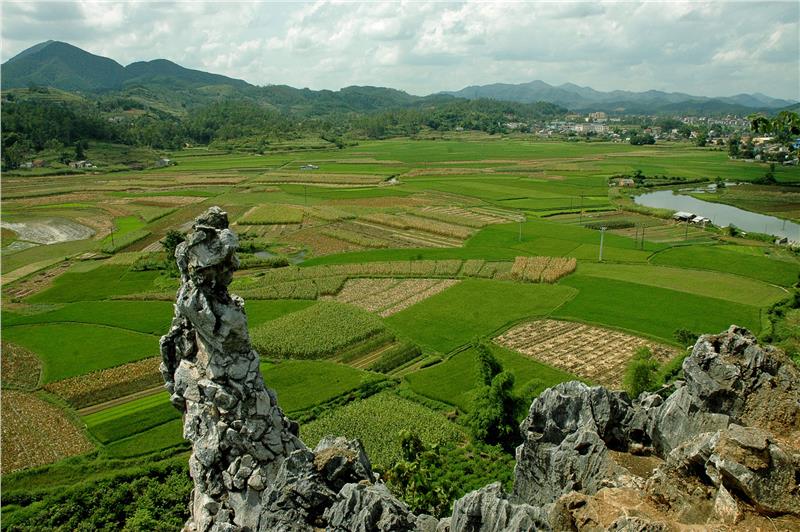
Lang Son is a mountainous province located in the Northeast Vietnam, about 154km from Hanoi by the road and 165km by the railway. The province shares border with China in the northeast, Quang Ninh province in the southeast, Bac Giang in the south, Thai Nguyen in the southwest and Bac Kan is the west.
Lang Son terrain is mainly low hills and mountains. The average altitude is 252m above the sea level. The lowest point is 20m in the south of Huu Lung district and the highest point is Mau Son Mountain with 1541 m high. Mau Son is situated about 30km from Lang Son city to the east, surrounded by many large and small mountains, sometimes has snow in winter.
Lang Son climate features the tropical monsoon climate of the North Vietnam; the average temperature is from 17 to 22°C; the temperature of the coldest month can fall down 5°C or below 0°C. The annually average humidity of Lang Son is from 80 to 85%, lower than other regions in the country.
Lang Son situates in the northeast region, so the average rainfall is 1200 - 1600mm. The only place having the rainfall more than 1600mm is Mau Son mountainous region (2589mm). Na Sam (1118mm) and Dong Dang (1100mm) of Lang Son is the arid regions of North.
Located in the tropical monsoon climate, in the slopes of the mountains of the Northeast region, Lang Son has a plentiful network of rivers. The density of river here ranges from 0.6 to 1,2km/ km2. Lang Son has 5 independent rivers including Ky Cung River, Thuong River, Luc Nam River, Tien Yen - Ba Che River (or Nam Luoi - Dong Quy) and Na Lang River.
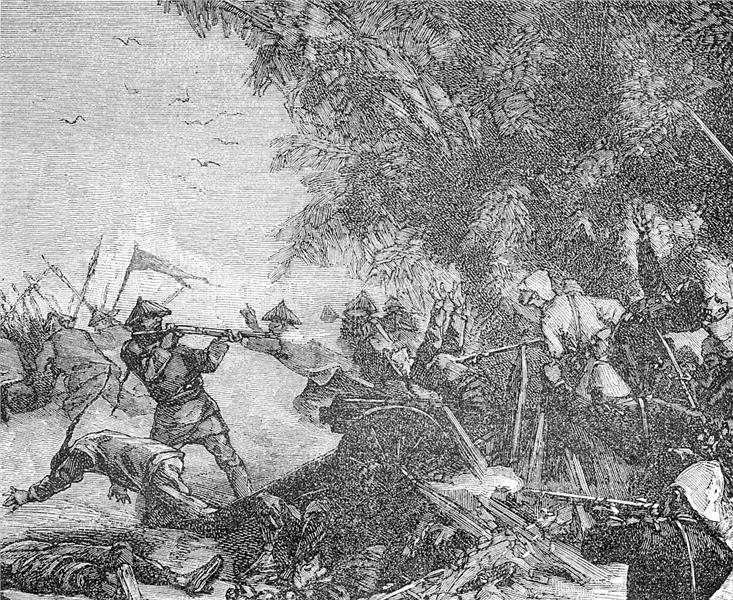
After the fall in Thang Long in 1952, Mac Dynasty run on Cao Bang by the time from 1593 to 1677 and built Mac Dynasty citadel in Lang Son to resist the Le - Trinh. Lang Son was one of 13 original provinces established in Northern Vietnam (1831) by King Minh Mang.
Since the establishment of the Nguyen Dynasty in 1802 until then, northern Vietnam had been under the rule of a viceroy. In 1885, Lang Son was occupied by the French and the converted it into an important military base to their other base in Cao Bang.
On June 7th, 1949, Loc Binh district of Hai Ninh province was merged into Lang Son province. Until 1950, Lang Son has 10 districts: Bang Mac, Bac Son, Binh Gia, Cao Loc, Diem He, Loc Binh, On Chau, Thoat Lang, Trang Dinh and Van Uyen. On July 1st, 1956, Huu Lung district was transfered from Bac Giang province into Lang Son placed in "Khu tu tri Viet Bac" (Region of Northern Vietnam) which was formed the same day. The region of Northern Vietnam was existed until December 27th, 1975.
On December 16th, 1964, Diem He district and 6 communes of Bang Mac district were merged into Van Quan district; On Chau district and 8 remaining communes of Bang Mac district were consolidated into Chi Lang district; Van Uyen and Thoat Lang were consolidated into Van Lang district. From December 27, 1975 to December 29, 1978, Lang Son was merged Cao Bang into Cao Lang province, then was separated.
On December 29th, 1978, Lang Son province was re-established, at the same time, Dinh Lap district of Quang Ninh province was merged into Lang Son. October 17th, 2002, Lang Son town was changed into Lang Son city. So, Lang Son province has 1 city and 10 districts with the names as today.
Population of Lang Son is 831,887 people (population census in 2009) with 7 ethnic groups. Like other northern mountainous provinces, ethnic groups cover the majority population of Lang Son (84.74% of the provincial population). Among them, Nung ethnic people accounts for 43.9%, Tay ethnic people account for 35.3%, Kinh people account for 15.3%; Dao ethnic people account for 3.5%, Hoa ethnic peope, San Chay ethnic people and other ethnic groups account for 1.4%.
Most of ethnic groups in Lang Son maintainted their own language and used them in their daily life. However, today, Vietnamese has used commonly in Lang Son, which almost people here can read and write.
Administrative unit of Lang Son consists of Lang Son city (including 5 wards and 3 communes), and 10 districts (Bac Son, Binh Gia, Cao Loc, Chi Lang, Dinh Lap, Huu Lung, Loc Binh, Trang Dinh, Van Lang, Van Quan). Among them, there are 226 communal administrative units, including 207 wards, 5 communes, and 14 towns.
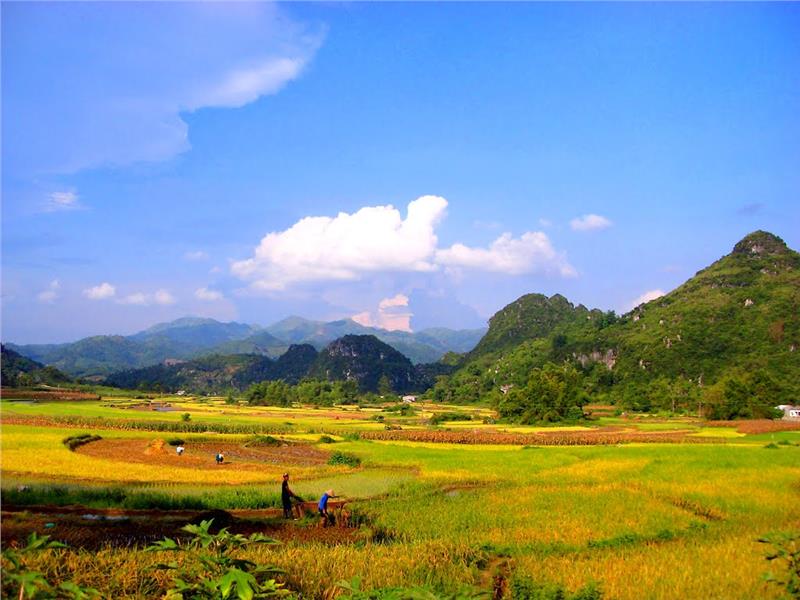
In 2014, Lang Son economy continued to grow rather than 2013 estimated at 9.05%, including 22.28% of agriculture, forestry and fishery, 11.3% of industry - construction and 11.52% of service. The proportion of sectors in the economic structure is relatively 26.46% of agriculture, forestry and fishery, 19.26% of industry - construction and 54.27% of service. Gross regional domestic product (GRDP) per capita reached 29.3 million dong. Industrial production reached relative growth. The industrial production value was estimated at 3586 billion dong, up14.2% compared to 2013.
Trade, tourism and service have many positive changes. The total ex-import turnover in the province was estimated at 3 billion USD, equal 1117.3% of the plan, an increase of 27.2% over the same period. Exports of the province reach 83.8 million USD, equal 107.7% of the plan increasing 23.2%.
In 2014, Lang Son tourism attracts 2.210,4 thousand tourists, reaching 92% of the plan, up 1.8% compared to the same period. In which, the international tourists reached 2071 thousand, decreasing 21.7%, the domestic tourists reached 2003.3 thousand tourists, increasing 5%. The social revenue reached 819 billion dong, up 1.1%.
The total provincial revenue was estimated at 4.693,2 billion dong, reaching 143% of the estimates, an increase of 40.3% compared to 2013. The total provincial expenditure in 2014 was estimated at 6.8907 billion dong (119% of the estimates, an increase of 8.8% in 2013).
Education: Until now, Lang Son has consolidated, developed the complete education and training system from preschool to high school, distance education to vocational education, day-boarding elementary to boarding ethnic school; from public schools to private schools.
Health care: Health care has positive changes. The province has 210/226 communes meeting the national standards of health, reaching 22.16 hospital bed/ thousand people; 8.4 doctors/ thousand people.
Social welfare was paid attention. The policy for the poor, beneficiaries of social welfare are taken seriously and promptly. Create jobs for 12.764 employees, reaching 102% of the plan. The percentage of trained labors reached 41.2%, up 2.2% compared to 2013.
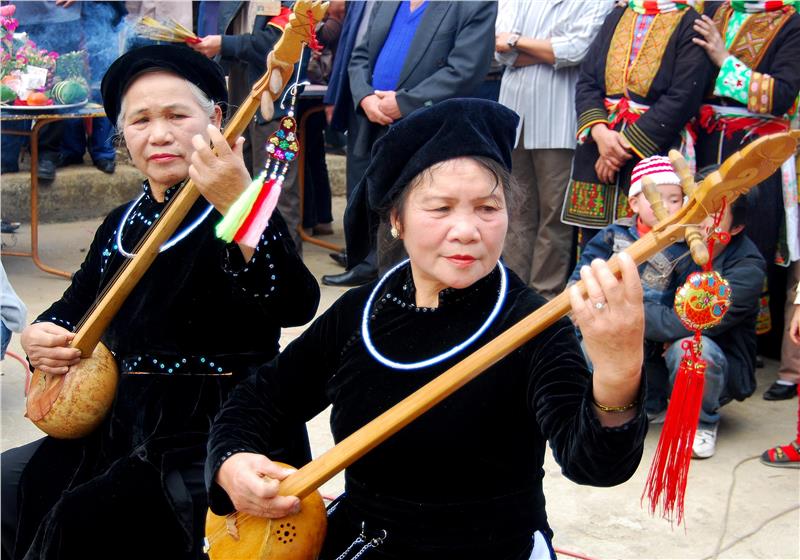
Located in the northeast of the country, Lang Son is a mountainous province with many ethnic groups who have long lived together as Nung, Tay, Kinh, Dao, Hoa, and San Chay... It has contributed to the abundance and diversity in the cultural identity of Xu Lang with customs and habits, festivals, folk singings, Then singing, sli singing, luon singing, upland fairs, traditional colorful costumes, and exquisite cuisine.
The ethnic culture is a special content that makes attraction and uniqueness of Lang Son culture as well as the diversity in cultural tourism of Lang Son. Through a series of cultural activities in Lang Son during a year, ethnic cultural identity plays an important role.
Typically, there are spring festivals. Festivals in Lang Son are typical for festivals of people in northern region. But the festival in different localities each bring flavor and nuances of different characteristics are unmistakable.This is shown clearly through features as 0% of festivals annually held in Lang Son is Long Tong festival, praying for good crops, good weather, health and prosperity. However, festival in each locality is different and brings its own flavor and nuance.
Besides, culinary culture also contributes to the rich culture of ethnic groups in Lang Son province. Not only that, when coming to villages of the ethnic groups in Lang Son, tourists easily feel the sincerity and hospitality of the people here. All unique cultural identities bearing the flavor of each village in Lang Son will give tourists new experience once visiting here.
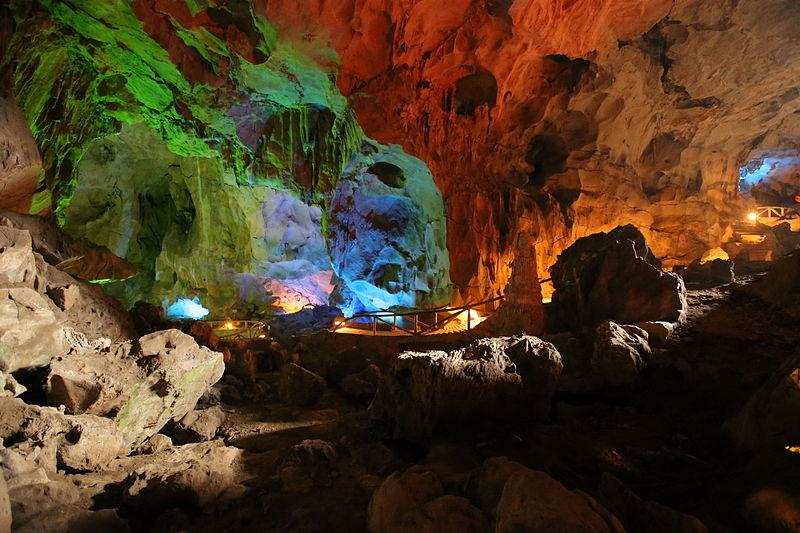
Natrure has bestowed many scenic spots, exotic caves for Lang Son as Tam Thanh cave, Nhi Thanh cave, Nang To Thi, Mau Son mountain. In addition, Lang Son also preserved many historical relics in the process of building and defending the country such as Chi Lang Pass, Mac Dynasty Citadel... Besides, it is a beautiful countryside with green mountains, blue water of dreaming Ky Cung River.
Mau Son Mountain is a convergence of many unique natural landscapes and biodiversity with the altitude of 1541m above the sea level is the land of wind, cloud and fog. Hundreds of consecutively rolling mountains make a wonderful Mau Son as the heaven on the earth. Mau Son climate is cool and airy in summer; the winter has fog and sometimes has snow, so it is an ideal ecotourism place in Lang Son, especially for those who prefer to ecotourism and exploring tourism.
The relic population of Nhi- Tam Thanh, To Thi Mountain, and Mac Dynasty Citadel: The relic is located in limestone mountains in the northwest of Lang Son city, Tam Thanh Ward, with an area of 50 hectares, where there are wonderful natural caves, ranked national monument in 1962 with the value of landscapes and typical cultural history. The relic consists of Nhi Thanh cave, Tam Thanh cave, Mac Dynasty Citadel, Vong Phu Mountain. Four separate beauties are combined together to form a special charming relic population dubbed as "de nhat bat canh" (the most beautiful relic among 8 relics) of Lang Son
Located about 0.5km from Ky Bridge, on Mai Pha Street, there is an elephant-shaped rocky mountain emerging between the paddy fields. Dai Tuong Mountain has Chua Tien Cave, one of 8 beautiful landscapes in Lang Son. Chua Tien cave is located halfway up the mountain with 64steps. Chua Tien or Song Tien was erected in Hong Duc date (1460 - 1497). In the cave, there are stalactites in shape of fairies, elephants or flying bats. Steles of famous writers, celebrities were found here. Behind Elephant Mountain - Chua Tien (Tien Pagoda) is Fairy well that has 20cm wide mouth and precious water flowing year round.
Long Dau stream is one of the famous scenic spots and ecotourism place in Lang Son. Long Dau is a large stream with the length of 10km flowing through 2 communes of Mau Son and Yen Khoai in Loc Binh district. Long Dau stream originates from spectacular Mau Son Mountain with the height of 1000m.
Gio Cave is known as Thong Gio Cave or Mai Sao Phong Cave. Gio Cave is located in Lung Khom (Sao Thuong B village), Mai Sao commune, Chi Lang. Gio Cave population consists of a large area with many rocky mountains, natural stone cave belonging to Bo Nhan mountain from Sao Thuong village to the center of Mai Sao commune. Among them, Gio Cave is the most outstanding. This is the cave with the large scale, hundreds of meters in length, 50-70m wide, 30 - 40m high. The cave has 2 floors and a basement, little niches, so tourists can easily visit the cave. The ground cave is relatively flat; the arch cave is high and wide like the domes of church. On the wall, there are stalactites with bizarre shapes.
Festival
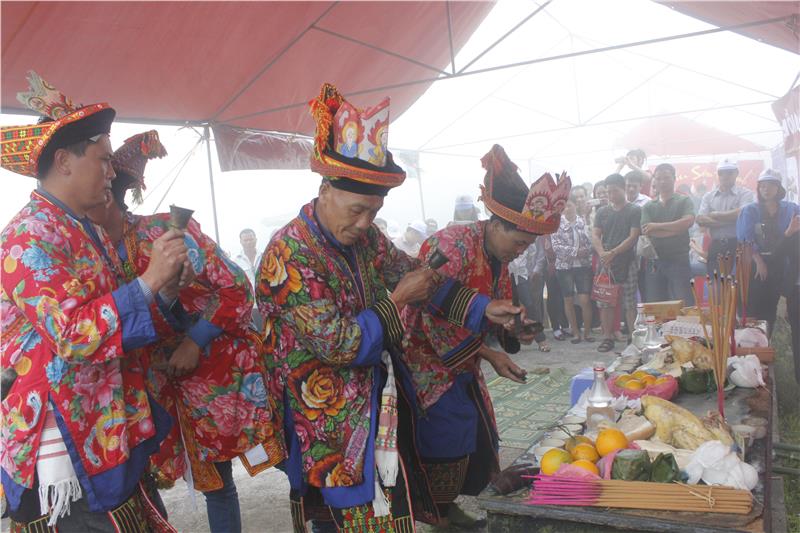
Lang Son is a province in far northern Vietnam, the residence of ethnic groups Tay, Nung, Kinh Dao, Hoa, Mong, San Chay... and the home to traditional festivals. Through thousand years of building and defending the country, ethnic communities in Lang Son has created abundant traditional culture. From this cultural cradle, Lang Son festivals have their own unique features.
Festivals in Lang Son are rich in content and form. Particularly, Lang Son festival bears the characteristics of Vietnamese traditional festival and the typical nuances of Lang Son culture. Festivals often are annually held in spring from January to April of lunar calendar. All festivals bring the content of building and defending the prosperity and happiness. In addition to spiritual, cultural and historical value, festivals of Lang Son brings the profound tourism value.
